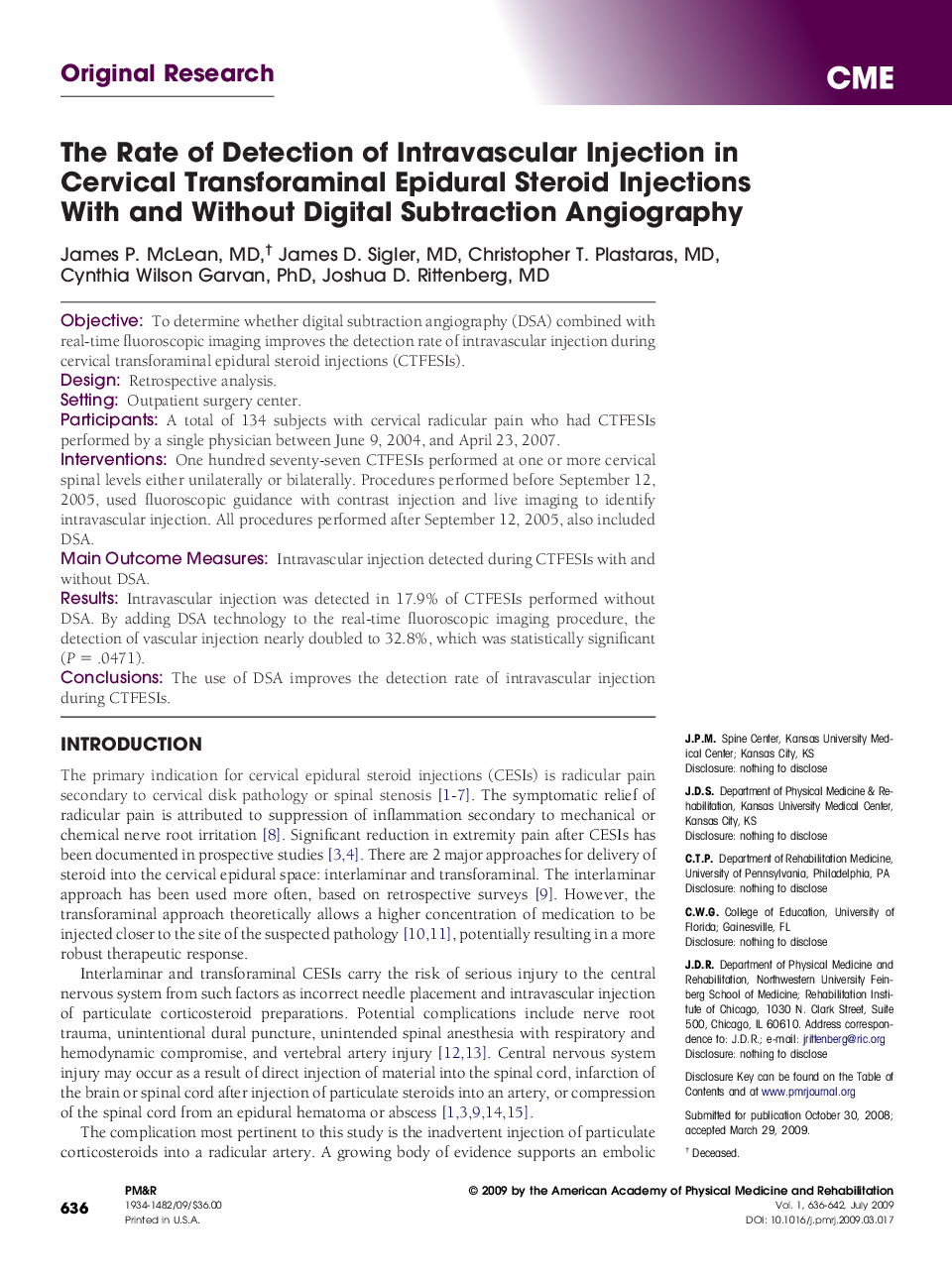| Article ID | Journal | Published Year | Pages | File Type |
|---|---|---|---|---|
| 2712950 | PM&R | 2009 | 7 Pages |
ObjectiveTo determine whether digital subtraction angiography (DSA) combined with real-time fluoroscopic imaging improves the detection rate of intravascular injection during cervical transforaminal epidural steroid injections (CTFESIs).DesignRetrospective analysis.SettingOutpatient surgery center.ParticipantsA total of 134 subjects with cervical radicular pain who had CTFESIs performed by a single physician between June 9, 2004, and April 23, 2007.InterventionsOne hundred seventy-seven CTFESIs performed at one or more cervical spinal levels either unilaterally or bilaterally. Procedures performed before September 12, 2005, used fluoroscopic guidance with contrast injection and live imaging to identify intravascular injection. All procedures performed after September 12, 2005, also included DSA.Main Outcome MeasuresIntravascular injection detected during CTFESIs with and without DSA.ResultsIntravascular injection was detected in 17.9% of CTFESIs performed without DSA. By adding DSA technology to the real-time fluoroscopic imaging procedure, the detection of vascular injection nearly doubled to 32.8%, which was statistically significant (P = .0471).ConclusionsThe use of DSA improves the detection rate of intravascular injection during CTFESIs.
